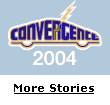
 DETROIT – It’s been a long haul, but standardization for handling the diagnostic information from autos finally is becoming a reality, say engineers at the Convergence 2004 conference here.
DETROIT – It’s been a long haul, but standardization for handling the diagnostic information from autos finally is becoming a reality, say engineers at the Convergence 2004 conference here.
Electronics and powertrain engineers speaking at the “Automotive On/Off Board Diagnostics” session say the industry has gathered enough momentum behind the movement to standardize basic diagnostic information handling and processes – not the information itself, which, as always, is highly proprietary – to finally move forward with wide-ranging standardization protocols.
Next year, says Werner Preuschoff of DaimlerChrysler AG, the auto industry should be well under way with adopting ISO 14229, a new international standard for onboard diagnostic (OBD) systems protocol. The protocols are “just the stream the data runs on,” Preuschoff says, and has nothing to do with the information itself.
The new standard is nonetheless critical, he says, in creating a universal diagnostics-information-handling system that is applicable worldwide. He says the goal of the new standard – as well as that of the Automotive Open System Architecture (AUTOSAR) consortium – is to implement an open industry standard for automotive electronic architectures such as that required by OBD systems.
Preuschoff says the matter is becoming more critical as vehicles incorporate a growing number of electronic control units (ECUs) and multinational auto makers must adopt common diagnostic practices across wide-ranging model lines, including vehicles developed and built in a variety of countries or regions.
Paul Baltusis, OBD-II technical specialist at Ford Motor Co., says standardization also potentially will make it easier for telematics suppliers and other aftermarket interests to use OBD-based data. He says it is not a given that auto makers always will be the ones handling such data, so universal standards are vital.
However, Baltusis does say that despite talk of auto makers or aftermarket suppliers downloading – through vehicle telematics systems – software updates, repairs or “enhancements” for the programming of vehicle powertrain ECUs, such a practice is unlikely because of the way in which vehicles are certified with regulators for series production.
He also says that although software problems often are at the root of electronic problems early in a vehicle’s service, such is not the case further down the road.
“The first year of production is where you see most software glitches fixed,” Baltusis says. After that, he says most vehicle service problems and warranty issues are hardware-related.




